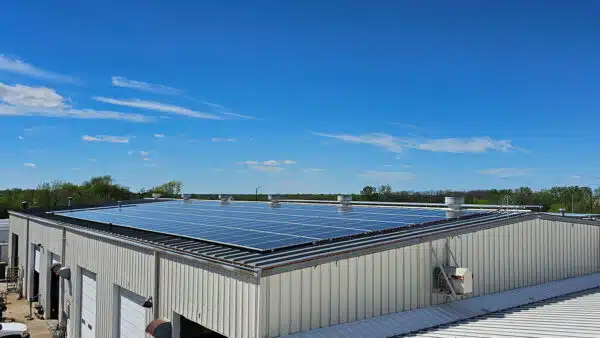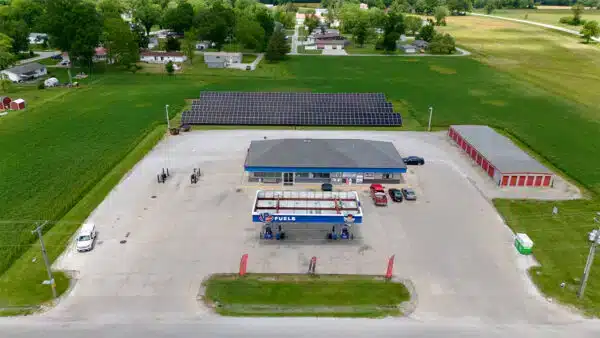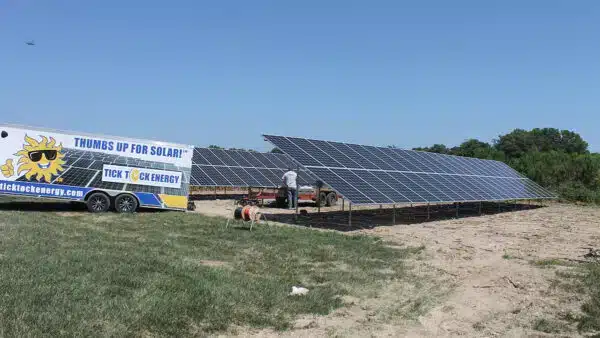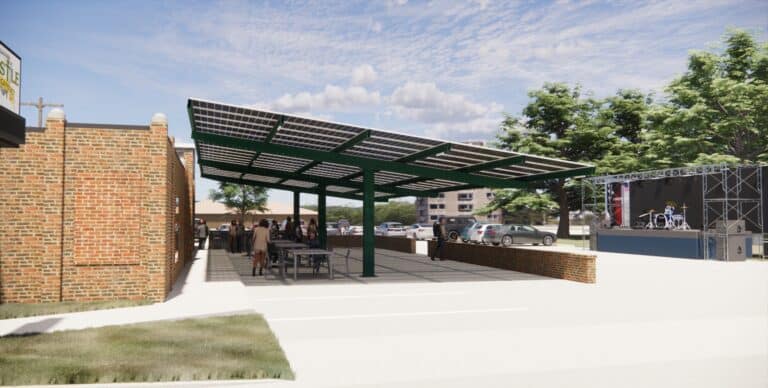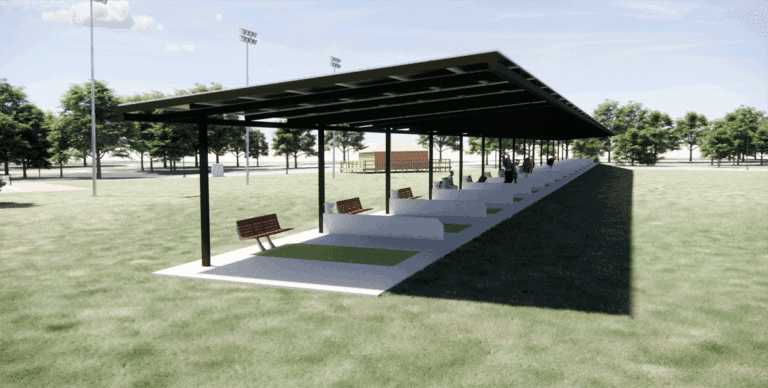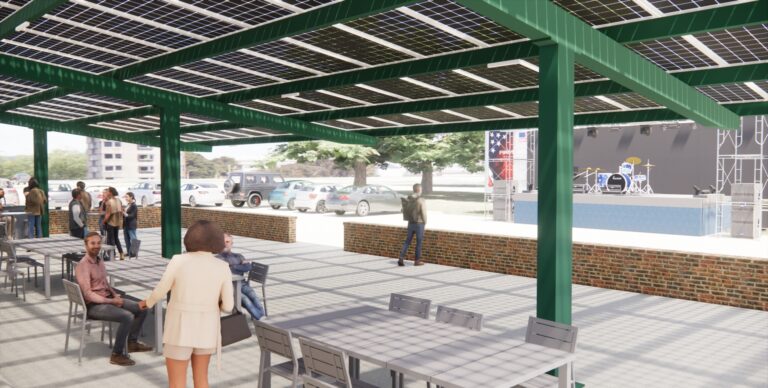Ground-Mounted Solar Panels
Tick Tock Energy offers ground-mounted solar panel systems, a popular installation approach for properties with ground area to work with or in scenarios where you want to keep the array off your roof. Nearly 50% of our solar installations are ground-mounted, and we have installed all types of commercial ground-mounted solar arrays in Illinois.
What are the Benefits of Ground-Mounted Solar Arrays?
Ground-mounted solar power systems eliminate the need for rooftop work. With Tick Tock Energy, you can install an open frame structure that allows greater ventilation of the panels to improve electrical efficiency. The primary benefits of ground-mounted solar include:
Optimal Placement and Efficiency
Unlike rooftop systems, ground-mounted solar panels are typically mounted at 30-degree tilt angle or consist of solar trackers that boost the amount of sunlight capture throughout the day. This leads to higher energy production and increased efficiency compared to roof-mounted systems.
Better Utilization of Bifacial Solar Panels
Where panels are mounted at steeper tilt angle or with solar trackers, capturing reflected solar energy on the backside of bifacial solar panels can boost overall electricity production by 1 to 5% and potentially higher depending on reflectivity of the site.
Avoid Limitations that Roof-Mounted Sometimes Create
Ground-mounted systems avoid the need for building structural roof analysis. In some cases, rooftops may offer limited area due to HVAC equipment, setbacks from wall parapets, fire code access, or other factors. For mid-life roofs, installing a ground-mount solar system can be done as phase 1 today and reserve a future rooftop solar installation along with a roof replacement.
Easier Maintenance and Accessibility
Ground-mounted solar panels are easier to access for cleaning, maintenance, or repairs, as they are at ground level. This reduces the need for specialized equipment or safety concerns associated with rooftop systems.
Ground-Mounted Solar System Options
Major factors when choosing a ground-mounted rack include available land area, slope of site or obstructions such as drainage ditches, creeks, large trees, ground settlement issues, soil strength, distance from point of electrical interconnection, and desired amount of electricity production. Fortunately, many rack options exist to address a wide variety of concerns. Rack options Tick Tock Energy has used to address customer needs and site issues include:
Fixed Ground-Mount Solar Racks
Fixed ground-mount racks are stationary and typically mounted at 30 degrees and occasionally at 20 degrees. Fixed ground mount racks may consist of a single steel pier embedded into the ground, or a rack using front and rear legs supported by a helical screw driven into the earth.
Ballasted Ground Mounts
Ballasted ground-mount racks may be low-profile, or low to the ground at 10-degree angle, or high-profile with tilt angles up to 30 degrees. Low-profile racking can help with aesthetics and eliminate vegetation management needs. High-profile will generate higher energy production and have wider rows. Ballasted systems can help where soil conditions are poor, prone to settlement.
Single-Axis Solar Trackers
For larger solar arrays where land is available and energy production needs are highest, a single-axis tracker racking system is prefect choice. For projects in 500 kW and larger range trackers are typically best choice. Facing east in the morning and tracking the sun and ending the day facing west, 1-axis trackers boost energy yield per square foot of land area.
2-Axis, or Dual-Axis Solar Trackers
The ultimate energy-production per square foot can be obtained in open sites with a 2-axis solar tracker. These single pole-mounted systems are typically around 9 to 10 kW per tracker and supported by underground concrete foundation. Dual-axis trackers track the sun in 2-dimensions and provide peak output throughout the day and maximize energy yield.
Essential Considerations for Ground-Mounted Solar Systems
When considering a ground-mounted solar system for your commercial site, it’s essential to evaluate factors such as available land space, shading factors, soil conditions, proximity to electrical interconnection point, local zoning regulations and more. Choosing the right ground-mounted solar rack for your situation requires careful engineering planning and to maximize their benefits and ensure a smooth installation process.
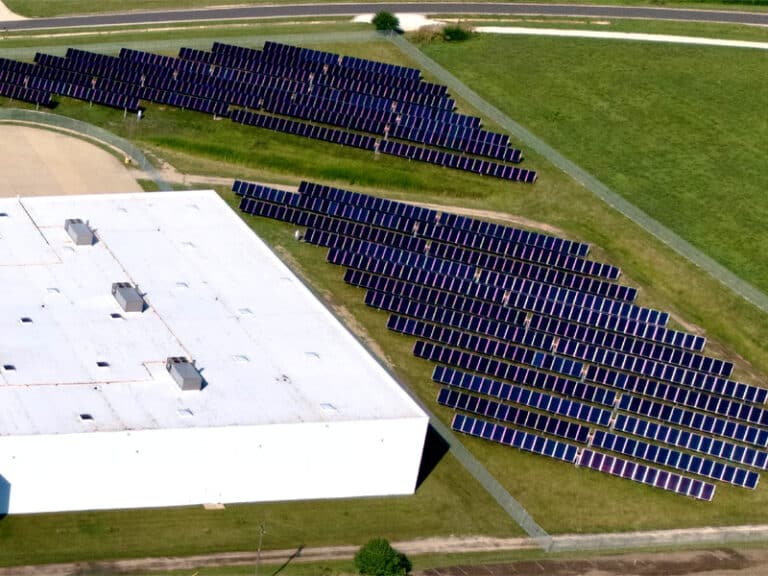
Site Conditions
The initial step in assessing a site for a ground-mounted solar array is identifying how much solar capacity can fit in the available space. Considering site slope, shading, obstructions such as creeks or waterways are factors that can influence construction efficiency and cost.

Energy Production Analysis
From an initial solar array plan, overall system capacity (in kW, or kilowatts) and forecasted energy production (in kWh, or kilowatt-hours) is modeled. When available, hourly consumption data for a commercial facility is obtained allowing more accurate modeling of potential kW-demand reduction and kWh-savings under time-of-use rates. Electricity savings are a key input into the overall financial modeling to determine return-on-investment (ROI).
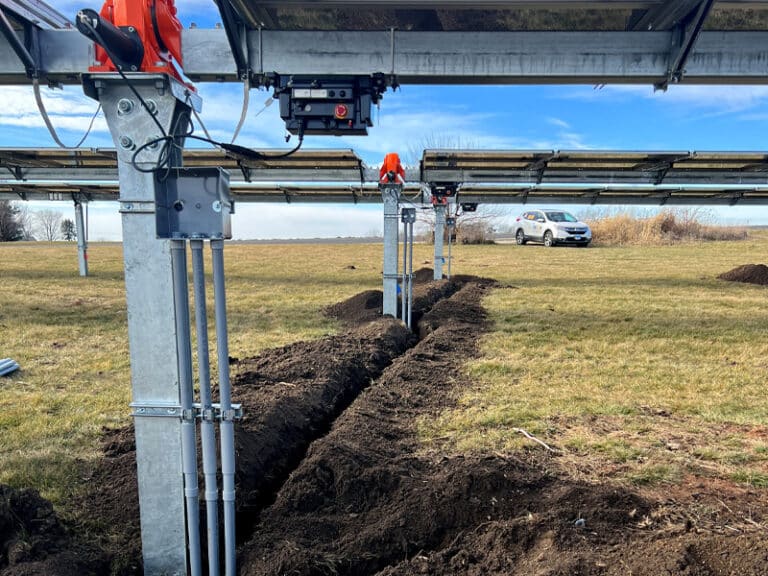
Soil Conditions
Soil strength and acidity play a role in ground-mounted solar systems. Completing a geotechnical engineering study is helpful to confirm foundation design and need for additional coating or protection on underground steel foundations. Initial planning is often based on presumptive soil conditions for basis of initial design and cost estimating.
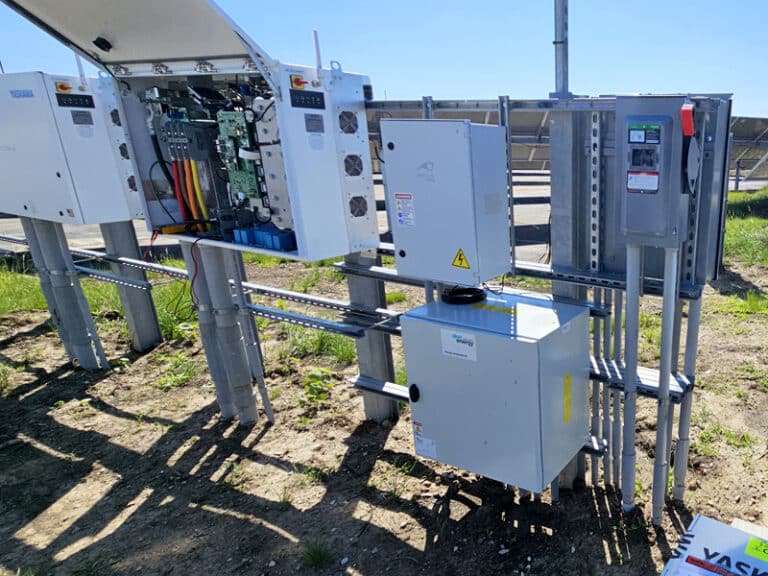
Electrical Planning
The location of a ground-mounted solar array with respect to the point of electrical interconnection is potentially a major cost factor. Long distances from array to a building’s electrical service may require larger wire size to carry current over a distance while maintaining low voltage drop. The size of the solar array, quantity of strings and need for DC (direct-current) combiner panels and the inverter locations and associated AC (alternating current) equipment and interconnection method is a must for accurate project cost estimate.

Utility Interconnection Approval
The last major step in finalizing a commercial solar project for construction is utility interconnection approval. After preliminary planning is completed, applying for utility interconnection approval will result in either approval, modification of size due to grid limitations or needed upgrades, or additional utility-required metering gear will determine final project cost. Sometimes large projects may be held up in long interconnection “queues” competing with other area solar project competing for capacity on the local utility grid.
An Opportunity to Supporting Pollinator Habitat
Once a ground-mounted system is constructed, managing the landscape around the solar array is required. Spraying glyphosate, an herbicide, or related weed-killing chemicals is not an environmentally friendly option as our food-supply, waterways, are already commonly laden with chemicals. Introducing more chemicals for weed control is costly, time-consuming, detrimental to bees and beneficial insects, and all-around poor approach. Tick Tock Energy supports a growing trend to compliment a solar array with pollinator habitat that is easy to maintain while creating microhabitats for bees, butterfly, beneficial insects to thrive. We’re facing a tremendous loss in biodiversity as urban development continues to consume our wild areas. As farm ground, side lots, and underutilized grassy fields adjacent to commercial buildings are converted to solar power production, we advocate for a smarter approach to landscape maintenance by integrating pollinator habit.
How Tick Tock Energy Installs Ground-Mounted Solar Systems
Tick Tock Energy can help you install a cost-effective, reliable power generating system for your home. In four simple steps, we securely mount your solar panel system:
1. Develop Your Solution
From solar system planning, energy and financial modeling, budgeting, and advising on all aspects of a solar project, we take the steps necessary to develop a cost-effective solar proposal.
2. Interconnection Approval & Final Engineering & Permitting
Obtaining utility interconnection approval is a necessary hurdle before construction can begin. This process can take 1 to 3 months or longer. The utility could require downsizing of the array, require other investment in the local grid or additional metering equipment.
3. Final Engineering & Permit Approval
After utility interconnection approval obtained, , system engineering and construction documents are finalized. Permits are obtained and construction commences.
4. Turnkey Installation
Tick Tock handles all procurement of major solar equipment, hires installation subcontractors, manages all facets of construction through commissioning, startup and final utility energization.
5. Monitoring and Operations & Maintenance (O&M) Support
Tick Tock solar installations include detailed solar monitoring systems that report real-time power, energy and performance data. Our Solar Service Department then provides long-term O&M services to ensure top performance from your solar asset.
Custom Financing Options
Tick Tock offers flexible solar loan or lease financing options to help you make purchasing affordable, efficiently monetize tax incentives, and customize a payment plans to make your solution affordable. See also our Commercial Solar Financing Page for more information.
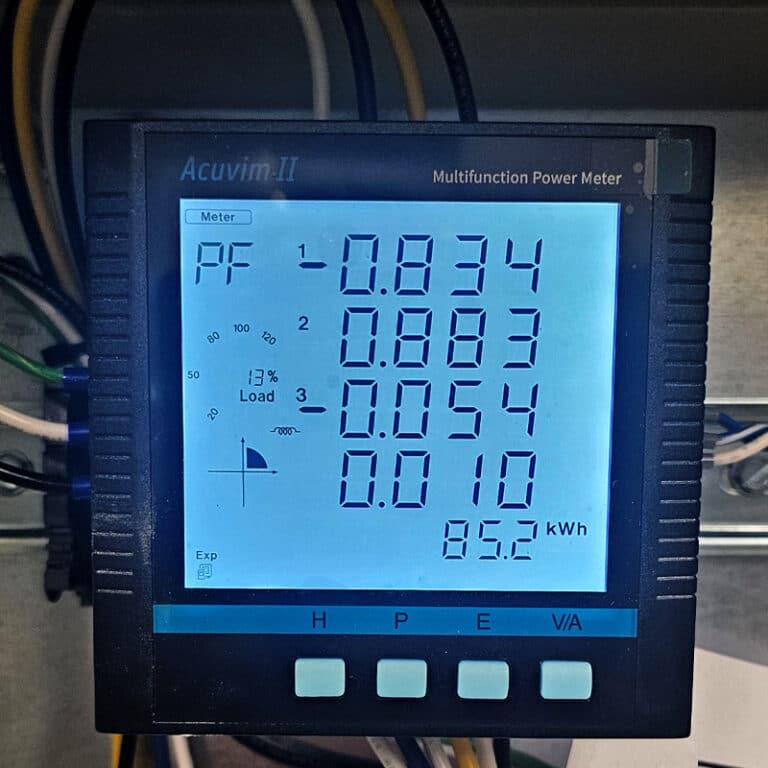
Identifying and Resolving Power Quality Issues Before Solar
For larger commercial and industrial facilities, power quality is often an existing problem impacting production equipment. Deploying power monitoring before a solar array can help identify potential site power quality issues. Without metering and measurement analysis tools, power quality may cause unexpected shutdown of plant equipment, premature failures, and other costly disruptions. Identifying and resolving issues before a solar installation can resolve existing problems and prevent future impact on solar array performance and maintenance. Establishing a baseline power profile before solar can help more rapidly troubleshoot post-solar installation issues should they arise. In our experience, power qualify conflicts at times can interfere with solar inverter operation leading to downtime and service calls. Tick Tock Energy can help your facility beyond just installing solar.
Other Power Management Services
Besides supporting building power and energy monitoring needs, Tick Tock Energy can provide other energy-consulting services, provide integrated battery energy storage for load management and emergency backup, and offer electricity commodity purchasing options.
Ready to Start?
Request a free quote today
Tick Tock Energy is ready to help you invest in a clean solar energy system on your property, capture lucrative solar incentives, reduce long-term electricity costs, and and enhance the value of your property. To discuss your power needs with one of our solar consultants, request an initial consultation and quote today.
See Our Commercial & Industrial Solar Work
Tick Tock has helped many commercial facilities across Illinois, Indiana and Missouri PRODUCE their own electricity from the sun, REDUCE electricity costs, and MANAGE their energy into the future. Solar helps boost property and stock values and join our growing list of satisfied customers today. Explore recent installations below.
Tick Tock Customers Are
Thumbs Up for Solar! ®
Commercial Solar Installation Testimonial for Tick Tock Energy / VFW Hall Lawrenceville, IL
